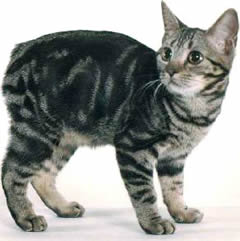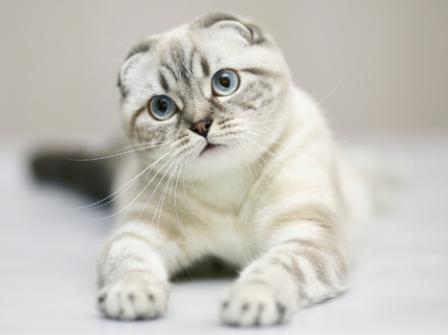 |
| Figure 1: Sphynx cat |
The scientific
paper “Breed-related Disorder of Cats” by Gunn-Moore et al discuses the
negative consequences cats are being forced to endure due to selective
breeding. In the past, cats have been very genetically diverse, as they are
very un-selective when mating, and a wide variety of mates are often available.
It was not until the 19th century that humans began to take an
interest in selectively breeding cats for desired features including coat quality,
body and head shape, eye color, and size. The first cat show was held in the
Crystal Palace in London in 1871. Since then, humans have created many new
breeds of cat (Gunn-moore et al).
 |
| Figure 2: Munchkin cat |
This study
examines data given to the authors by veterinary clinics. It states that of the United
Kingdom's 60 million cats, 10% of them are considered purebred. While this may
not appear to be a significant figure of cats, one must remember that 10% of 60
million is a large number of 600,000 pure bred cats in the UK alone. A lot of
cats are being purebred. Unfortunately, the breeding of such cats is having
many negative consequences. Many cats are inbred, resulting in diseases
and disorders being associated with certain breeds. Traits being purposely
breed for are also having harmful affects on cats (Gunn-Moore et al).
 |
| Figure 4:Manx cat |
 |
| Figure 3: Scottish Fold |
Some examples of cat breeds suffering from the affects of artifice breeding include the Manx, Sphynx, Munchkin, and Scottish Fold breeds. Manx cats have been breed to have a little stubby tail. However, the genes responsible for shorting the cat’s tail also shorten its spine, often resulting in severe arthritis and digestion problems. Sphynx cats are bred (for some strange reason) to be hairless. This often results in Sphynx cats getting sunburnt and chilled. Munchkin cats, though adorable, often develop arthritis in their unnaturally short legs. Scottish Folds are famous for their folded ears. Sadly, the genes that folds the cartilage in their ears can also fold the cartilage in other parts of their bodies, often resulting in damage to their limbs and tails (Gunn-Moore et al).
While some animal
rights activists claim all selective breeding efforts on cats should be ended,
the scientists in this paper believe that some forms of selective breeding are
not harmful to cats and can result in better pets. They recommend breeding cats
for traits such as behavior instead of traits, like folded ears, boldness,
short legs, and short tails, that are linked to harmful physical defects. The
authors do not recommend purchasing the above listed cats and instead suggest
selecting a healthy and genetically diverse cat from a shelter (Gunn-Moore et al).
Works Cited:
Figure 2: From http://www.vetstreet.com/cats/munchkin obtaiend on 20/04/15.
Figure 4: From: http://www.biologycorner.com/APbiology/inheritance/11-6_lethal_alleles.html obtained on 20/04/15.
I find it interesting that the authors of this paper argue for selective breeding for behavioural traits. These could equally have negative consequences. Cats are carriers of various diseases, so selection (for example) of a more approachable, “loving” nature might inadvertently increase the likelihood of disease spread. Has anyone looked at selection for behavioural traits that may not confer a fitness advantage in these animals?
ReplyDelete